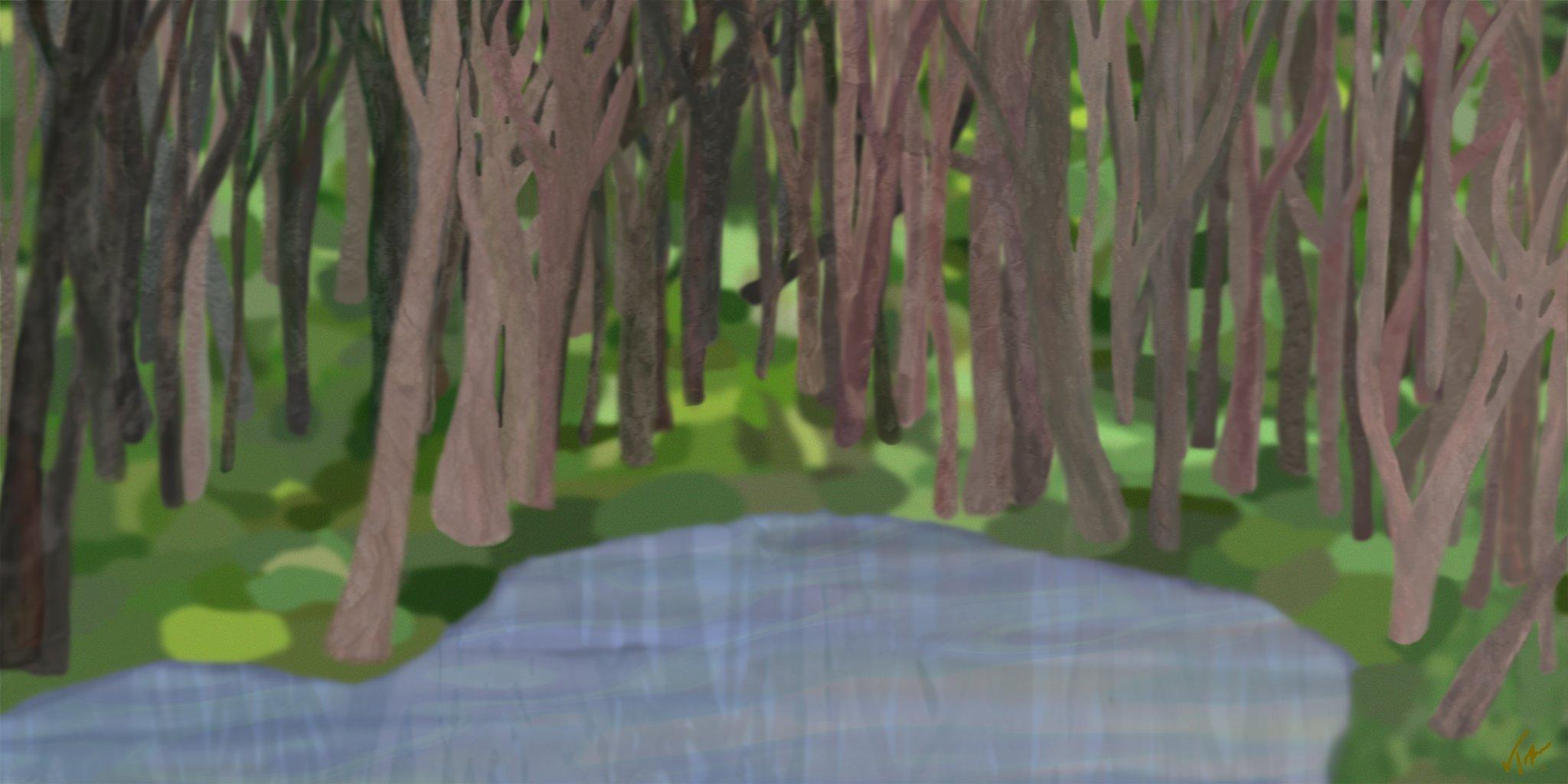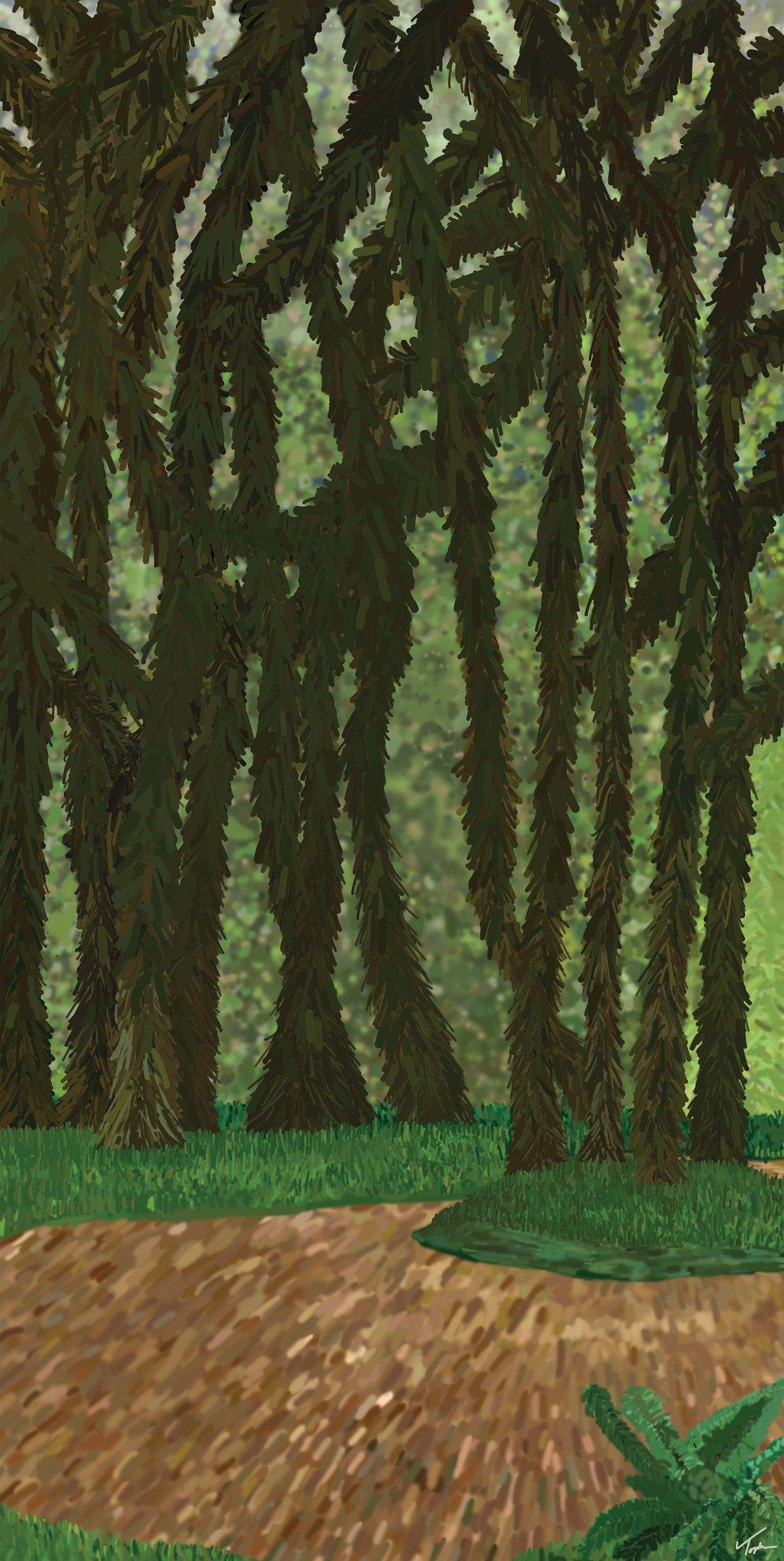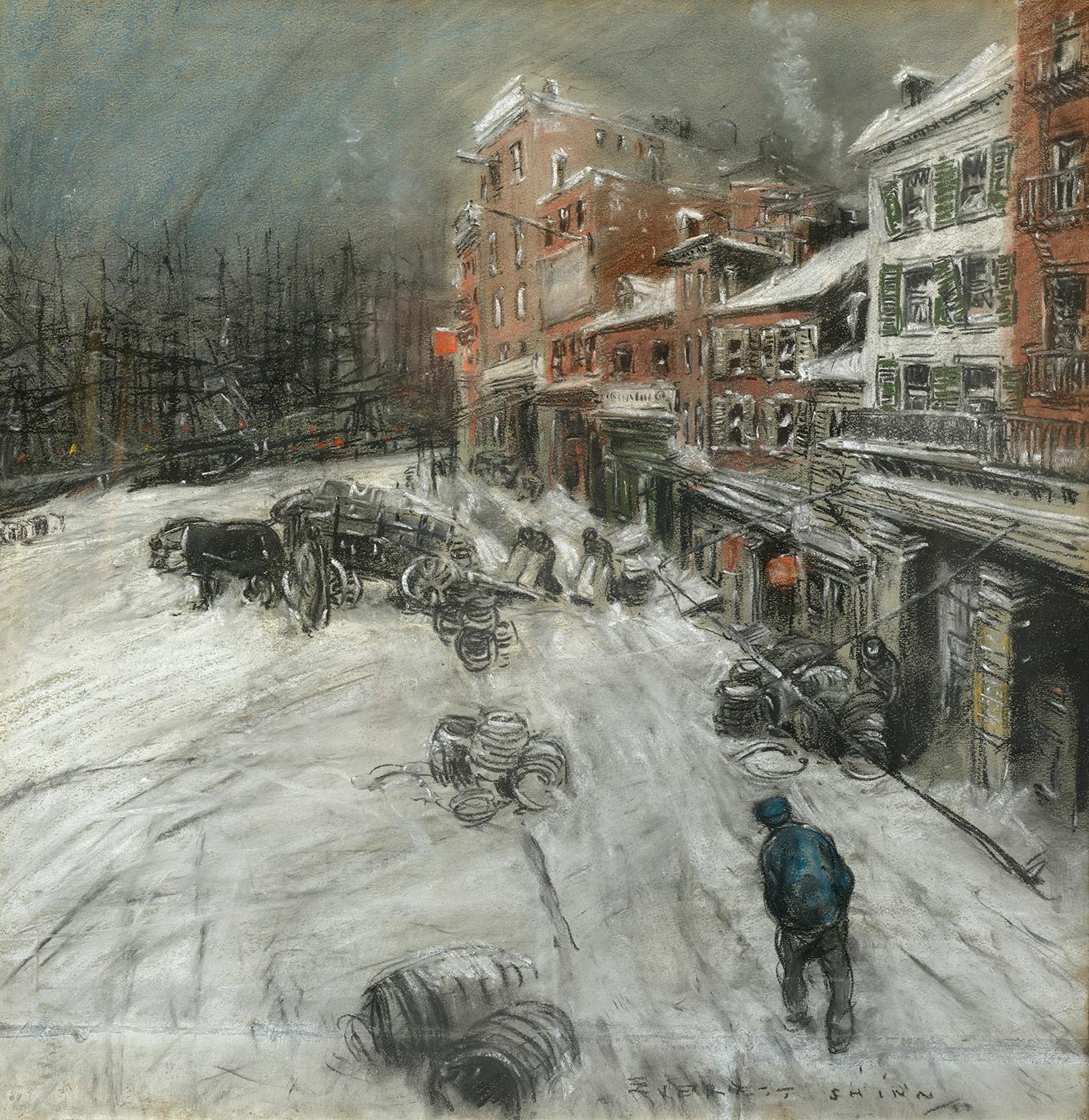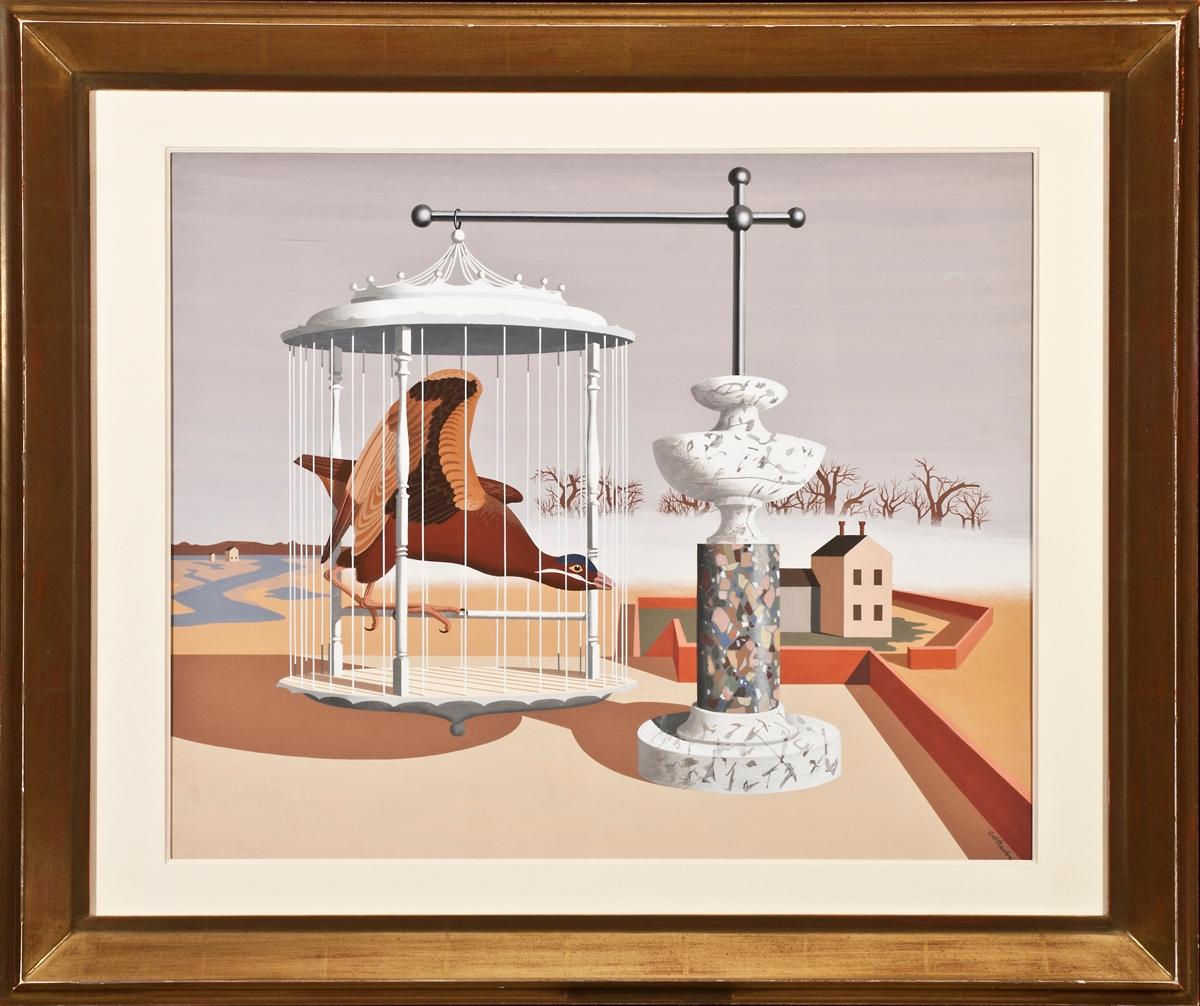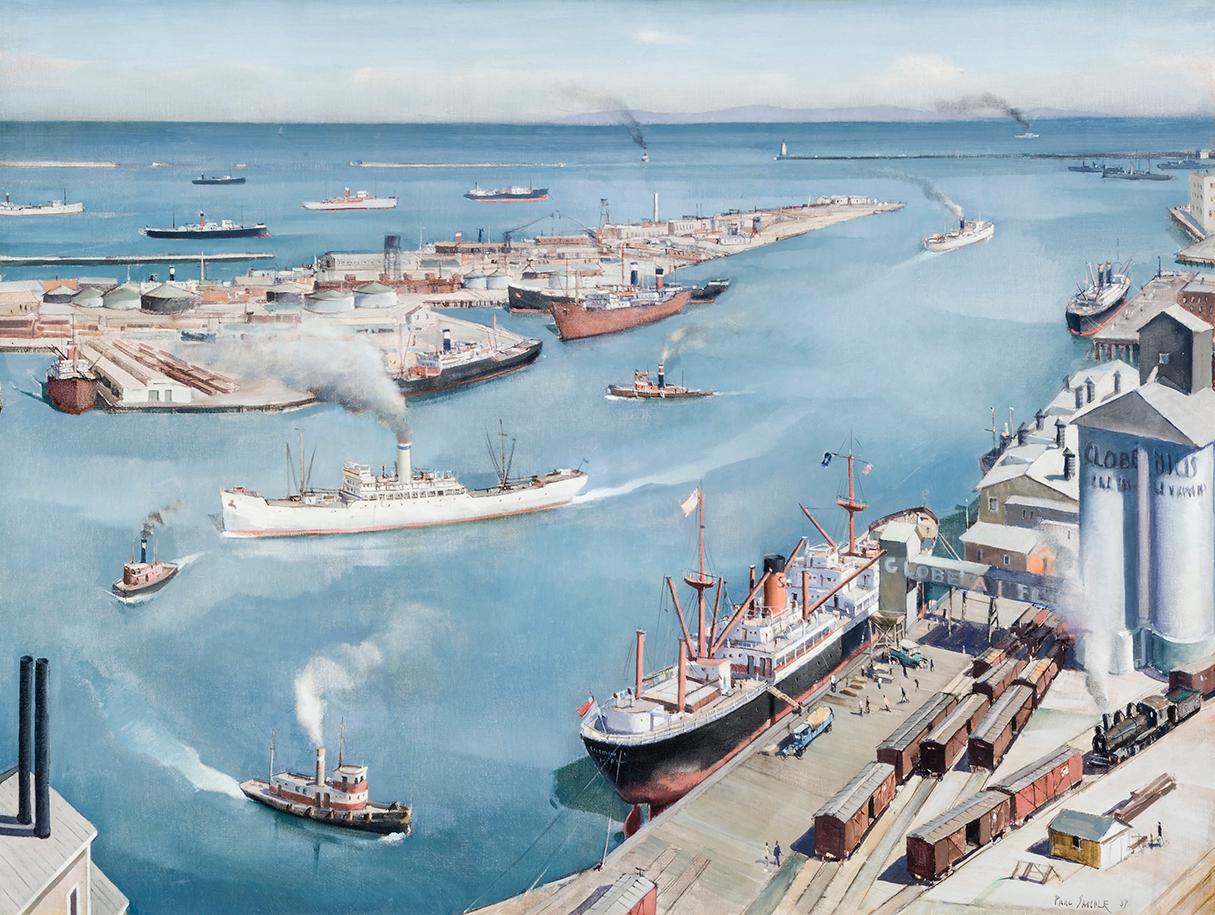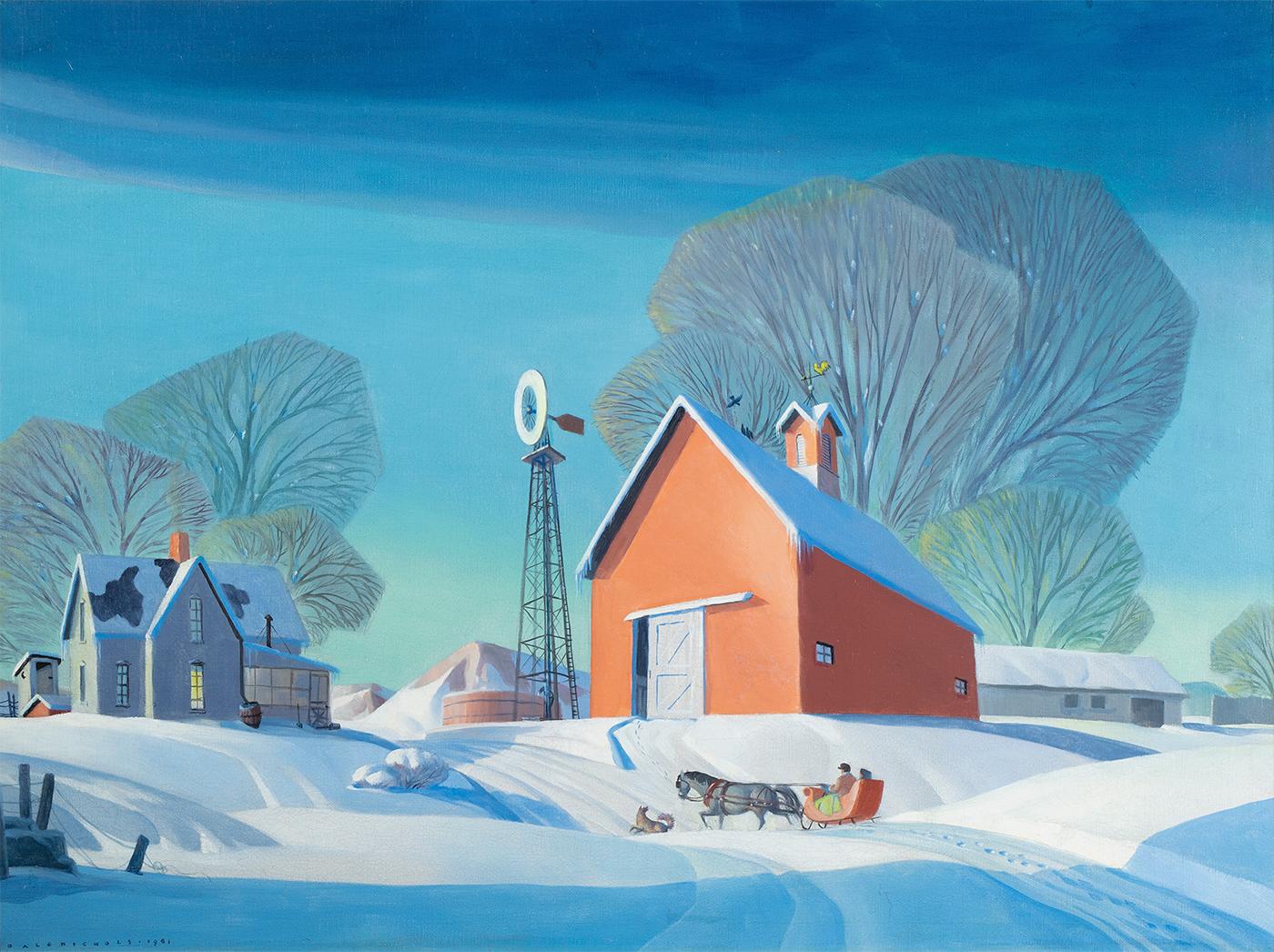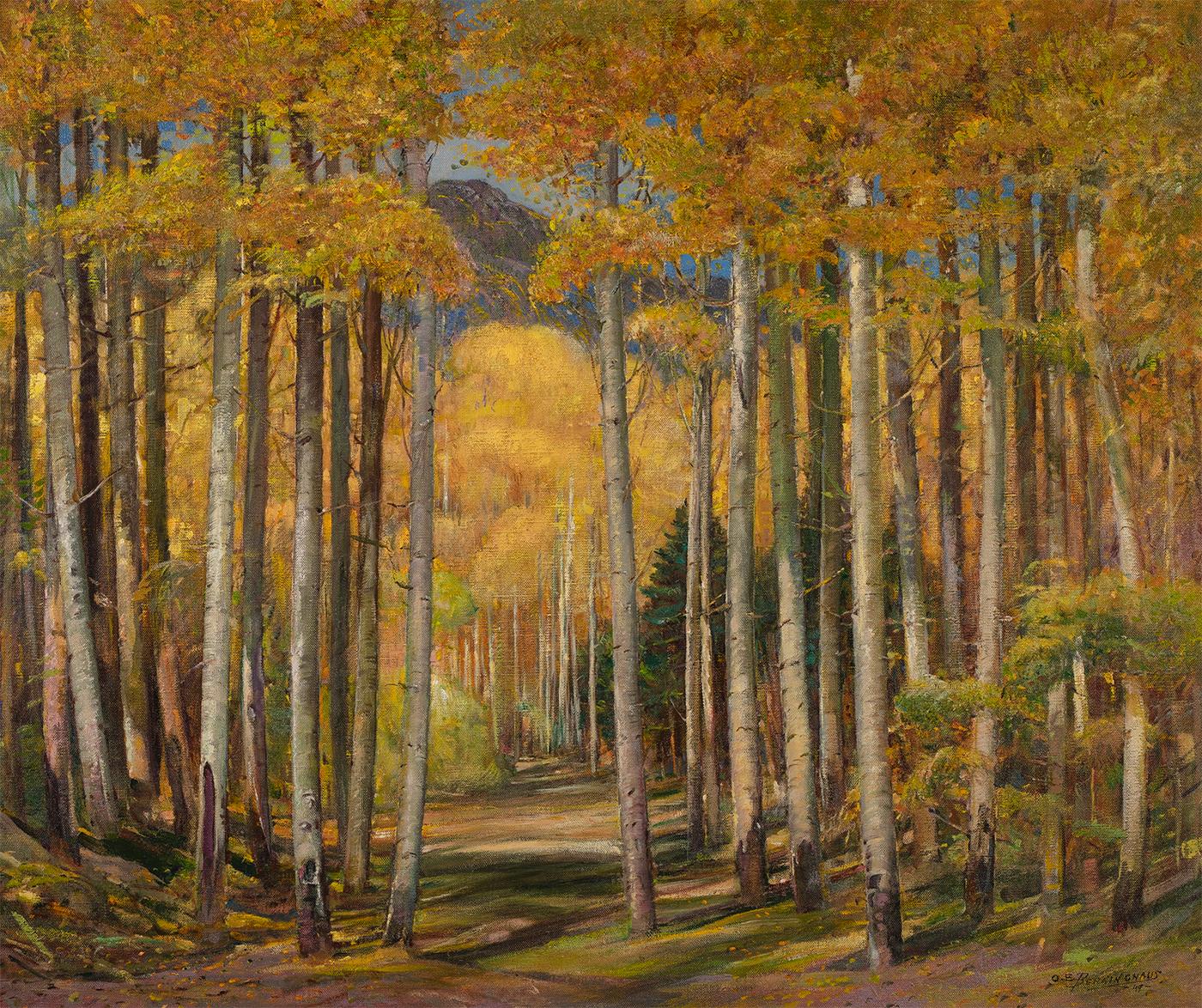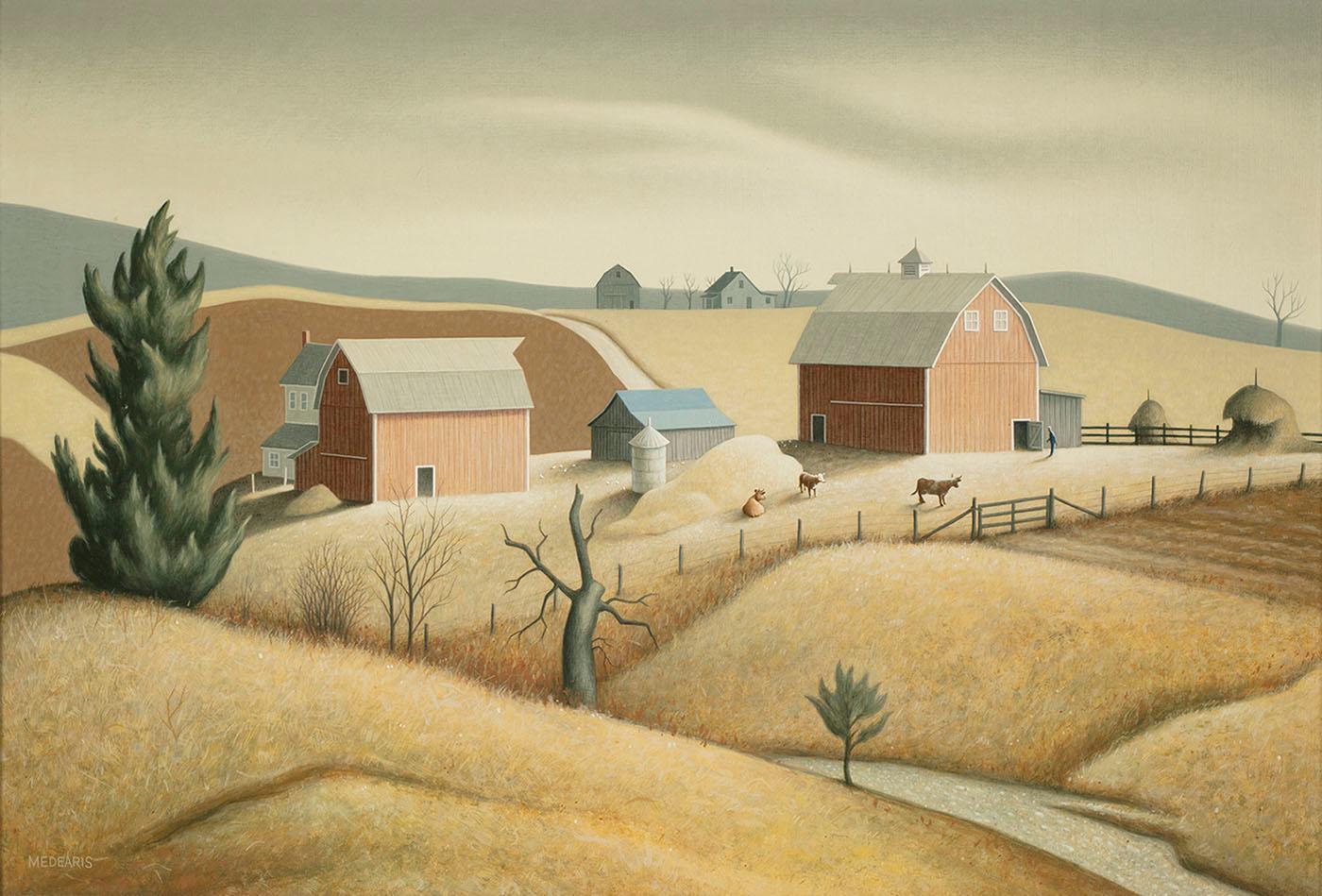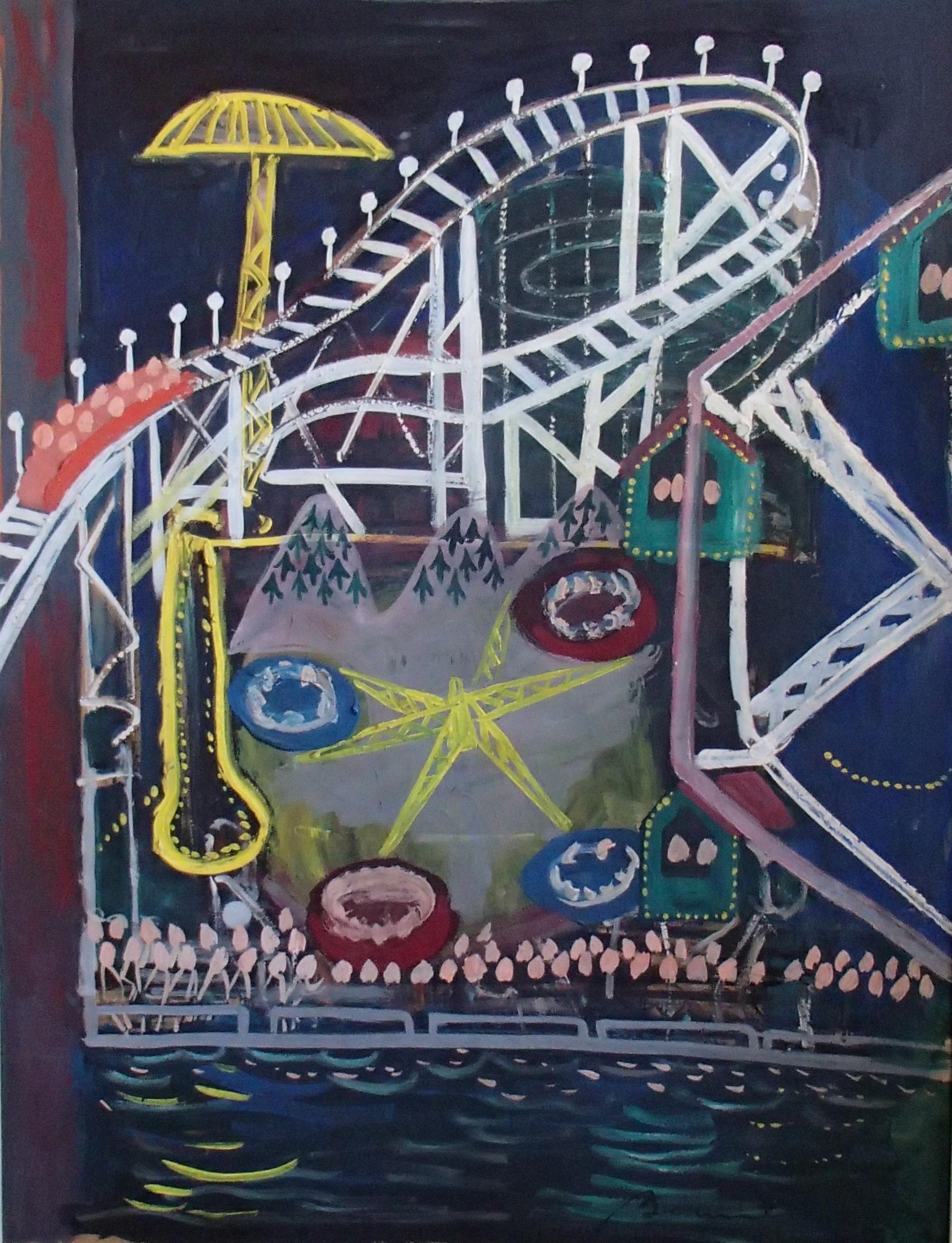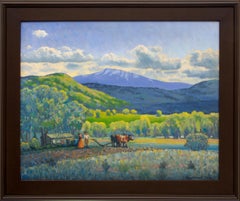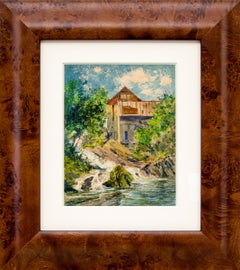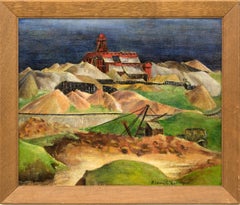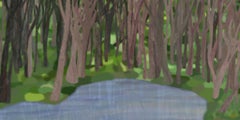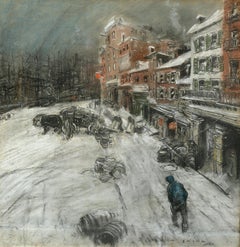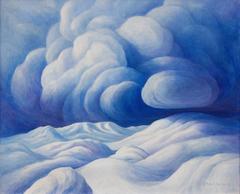
Snow Clouds (New Mexico)
View Similar Items
Want more images or videos?
Request additional images or videos from the seller
1 of 9
Anna KeenerSnow Clouds (New Mexico)1970
1970
About the Item
- Creator:Anna Keener (1895 - 1982, American)
- Creation Year:1970
- Dimensions:Height: 24 in (60.96 cm)Width: 30 in (76.2 cm)
- Medium:
- Movement & Style:
- Period:
- Condition:
- Gallery Location:Denver, CO
- Reference Number:1stDibs: LU273660632
About the Seller
5.0
Platinum Seller
These expertly vetted sellers are 1stDibs' most experienced sellers and are rated highest by our customers.
Established in 1979
1stDibs seller since 2013
265 sales on 1stDibs
Typical response time: 3 hours
More From This SellerView All
- Homesteaders, 1960s Framed Colorado Mountain Landscape Oil PaintingBy Harold Vincent SkeneLocated in Denver, CO"Homesteaders" is an original oil on board painting by artist Harold Vincent Skene (1883-1978) painted in 1960. The painting depicts two figures plowing a field with a pair of oxen, ...Category
1960s American Modern Landscape Paintings
MaterialsOil, Board
- Mill Near Plainfield, New Hampshire, Landscape Painting, Charles Partridge AdamsBy Charles Partridge AdamsLocated in Denver, CO"Mill Near Plainfield, New Hampshire" is an original, signed watercolor painting by artist Charles Partridge Adams (1858-1942), circa 1900. Singed by the artist in the lower left corner. Portrays a mill along a river with trees and clouds, painted in shades of brown, green, gray, and blue. Presented in a custom frame, outer dimensions measure 13 ¾ x 12 ¼ x 1 ¼ inches. Image size is 7 x 5 inches. Expedited and international shipping is available - please contact us for a quote. About the Artist: Born Massachusetts, 1858 Died 1942 Born in Franklin, Massachusetts, Charles Partridge Adams moved with his mother and two sisters to Denver, Colorado, in 1876 in an effort to cure the two girls who suffered from tuberculosis. In Denver, Adams found work at the Chain and Hardy Bookstore. He received his first, and only, art training from the owner's wife, Helen Chain. Mrs. Chain, a former pupil of George Inness, provided instruction and encouragement to the young artist and introduced him to other artists in the area including Alexander Phimister Proctor...Category
20th Century American Modern Landscape Drawings and Watercolors
MaterialsWatercolor, Archival Paper
- Fitzhugh Mine, near Leadville, Colorado, Mountain Mining Landscape Oil PaintingLocated in Denver, COOil on mounted paper, Colorado modern mountain landscape painting by early 20th Century female artist, Eldora Pauline Lorenzini (1910- 1993) from 1937....Category
1930s American Modern Landscape Paintings
MaterialsOil, Archival Paper
- Cripple Creek Colorado, 1950s American Modern Landscape Painting, Green BrownLocated in Denver, CO1950s gouache on paper painting signed by artist Mildred Welsh Hammond (1900-1980) portraying a modernist view of Cripple Creek, Colorado with the town ...Category
1950s American Modern Landscape Paintings
MaterialsGouache, Archival Paper
- Pueblo Near Santa Fe, New Mexico, 1930s Southwestern Landscape Oil PaintingLocated in Denver, COOil on board landscape painting of a Pueblo near Santa Fe, New Mexico signed by artist Eliot Candee Clark (1883-1980), painted in 1932. Signed by the artist in the lower left corner. Composed of shades of brown, tan, and blue. Presented in a custom frame, outer dimensions measure 23 ½ x 25 x 1 3⁄4 inches. Image size is 17 1⁄4 x 19 1⁄2 inches. About the Artist: Son of landscape painter Walter Clark and Jennifer Woodruff Clark, a student of psychic phenomena, Eliot Clark was a precocious artist who became a landscape painter in the late American Impressionist style. Moving to Albemarle, Virginia in 1932, he was one of the few Impressionist artists of the Southern states. Likely this was a result of his association with James Whistler and his painting in 1900 at Gloucester, Massachusetts with John Twachtman, a family friend. Showing his obvious interest in Impressionism, he wrote a book about its exponents including Twachtman, Theodore Robinson, Childe Hassam, Julian Weir, and Robert Vonnoh. Clark was a teacher including at the National Art Club from 1943, the Art Students League, and New York City College. Early in his youth, Clark traveled with his father and other prominent artists to paint in the summer art colonies at Annisquam, Gloucester, Chadd's Ford and Ogunquit where he met artists of stature such as Edward Potthast and John Henry Twachtman. Clark's only formal instruction was a short two months at the Art Students League in New York. His landscapes evoked a "spiritualized rendition of nature" that was to stay with him for the rest of his life. Clark (perhaps related to his mother's interest in physic phenomena) developed an early interest in oriental philosophy that ended up having a major effect on his artistic development, the sense of spirituality in his landscape paintings slowly grew in importance. Clark was educated in the New York public schools, and at age 13 exhibited with the National Academy and the New York Water Color Club. By 1912, he had won national painting awards, and by 1916 was writing books on American artists as well as the history of the National Academy. In his early years Clark was privately tutored, and then later graduated from Washington Irving High School at the early age of fifteen. Although he later was quoted as saying "he had no formal training from his father", his early work was notable influenced by Walter Clark's tonalist style. Between 1904 and 1906, Clark studied in France in Paris and Giverny, and in London he saw the impressionist work of James Whistler. He wrote to his father about the Whistler Exhibit stating that some of Whistler's work impressed him, "not so much in the handling, but in the use of color, and subtle arrangement of line and balance of masses." He engaged in a "walking tour" of Europe with a fellow artist whom he met in earlier in Paris. They visited many of the major galleries in Holland and then traveled through the Alps, finally reaching Venice on August 10, 1906. I n Venice, he produced some Whistlerian style pastels similar to the ones he had seen in the Whistler Exhibition. He returned to New York in 1906, and a year later took a studio in the Van Dyke Studio Building on Eighth Avenue...Category
1930s American Modern Landscape Paintings
MaterialsOil, Board
- 1930s Colorado Modernist Landscape Painting of Trees, Mountains & HousesLocated in Denver, COColorado Modernist landscape, watercolor on paper by Turner B. Messick (1878-1952) from 1938. Tree with houses and mountains in the background, pain...Category
1930s American Modern Landscape Paintings
MaterialsArchival Paper, Watercolor
You May Also Like
- Congaree National Park, Modern Impressionism Landscape Painting, Forest, Ltd EdBy Topher StrausLocated in Golden, COThis large limited edition modern landscape painting of Congaree National Park, in South Carolina, is a bold vivid work of contemporary art. The large-scale digital painting, dye-sub...Category
2010s American Modern Landscape Paintings
MaterialsMetal
- Enchanted, Original Impressionist Forest Painting, Acrylic Polymer on MetalBy Topher StrausLocated in Golden, COThis original modern landscape painting titled, Enchanted, is a bold vivid work of contemporary art. The original large-scale digital painting, dye-sublimated onto aluminum by Colora...Category
2010s American Modern Landscape Paintings
MaterialsMetal
- The DocksBy Everett ShinnLocated in New York, NYSigned and dated lower right: EVERETT SHINN / 99Category
Late 19th Century American Modern Landscape Paintings
MaterialsPaper, Pastel
$195,000 - Bird in CageLocated in New York, NYGouache on board, 20 x 24 in. Signed (at lower right): Atherton Painted about 1940 RECORDED: Art News (May 11, 1940), illus. [clipping citation] EXHIBITED: The Art Institute of Chicago, 1940, The International Watercolor Exhibition, no. 156, illus. on cover as Bird in Cage...Category
Mid-20th Century American Modern Landscape Paintings
MaterialsTempera, Wood Panel
- San Pedro HarborBy Paul SampleLocated in New York, NYIt is infrequent, to say the least, that a diagnosis of tuberculosis proves fortuitous, but that was the event, in 1921, that set Paul Starrett Sample on the road to becoming a professional artist. (The best source for an overview of Sample’s life and oeuvre remains Paul Sample: Painter of the American Scene, exhib. cat., [Hanover, New Hampshire: Hood Museum of Art, 1988] with a detailed and definitive chronology by Sample scholar, Paula F. Glick, and an essay by Robert L. McGrath. It is the source for this essay unless otherwise indicated.) Sample, born in Louisville, Kentucky, in 1896 to a construction engineer and his wife, spent his childhood moving with his family to the various locations that his father’s work took them. By 1911, the family had landed in Glencoe, Illinois, settling long enough for Paul to graduate from New Trier High School in 1916. Sample enrolled at Dartmouth College, in Hanover, New Hampshire, where his interests were anything but academic. His enthusiasms included the football and basketball teams, boxing, pledging at a fraternity, and learning to play the saxophone. After the United States entered World War I, Sample, to his family’s dismay, signed on for the Naval Reserve, leading directly to a hiatus from Dartmouth. In 1918 and 1919, Sample served in the U.S. Merchant Marine where he earned a third mate’s license and seriously contemplated life as a sailor. Acceding to parental pressure, he returned to Dartmouth, graduating in 1921. Sample’s undergraduate life revolved around sports and a jazz band he formed with his brother, Donald, two years younger and also a Dartmouth student. In November 1933, Sample summarized his life in a letter he wrote introducing himself to Frederick Newlin Price, founder of Ferargil Galleries, who would become his New York art dealer. The artist characterized his undergraduate years as spent “wasting my time intensively.” He told Price that that “I took an art appreciation course and slept thru it every day” (Ferargil Galleries Records, circa 1900–63, Archives of American Art, Smithsonian Institution, available on line). In 1920, Donald Sample contracted tuberculosis. He went for treatment to the world-famous Trudeau Sanitorium at Saranac Lake, in New York State’s Adirondack Mountains for the prescribed regimen of rest, healthful food, and fresh air. Visiting his brother in 1921, Paul also contracted the disease. Tuberculosis is highly contagious, and had no certain cure before the development of streptomycin in 1946. Even for patients who appeared to have recovered, there was a significant rate of recurrence. Thus, in his letter to Price, Sample avoided the stigma conjured by naming the disease, but wrote “I had a relapse with a bad lung and spent the next four years hospitalized in Saranac Lake.” The stringent physical restrictions imposed by adherence to “the cure” required Sample to cultivate an alternate set of interests. He read voraciously and, at the suggestion of his physician, contacted the husband of a fellow patient for instruction in art. That artist, then living in Saranac, was Jonas Lie (1880–1940), a prominent Norwegian-American painter and an associate academician at the National Academy of Design. Lie had gained renown for his dramatic 1913 series of paintings documenting the construction of the Panama Canal (The Metropolitan Museum of Art, New York; United States Military Academy, West Point, New York). Primarily a landscape artist, Lie had a particular affinity for scenes with water. His paintings, impressionistic, atmospheric, and brushy, never strayed from a realistic rendering of his subject. Sample regarded Lie as a mentor and retained a lifelong reverence for his teacher. Sample’s early paintings very much reflect Lie’s influence. ` In 1925, “cured,” Sample left Saranac Lake for what proved to be a brief stay in New York City, where his veteran’s benefits financed a commercial art course. The family, however, had moved to California, in the futile hope that the climate would benefit Donald. Sample joined them and after Donald’s death, remained in California, taking classes at the Otis Art Institute in Los Angeles. In Sample’s account to Price, “I couldn’t stomach the practice of painting a lot of High Sierras and desert flowers which seemed to be the only kind of pictures that were sold here so I got a job teaching drawing and painting at the art school of the University of Southern California.” Initially hired as a part-time instructor, Sample progressed to full-time status and ultimately, by the mid-1930s, to the post of Chairman of the Fine Art Department. Sample, however, did not want to wind up as a professor. “Teaching is all right in small doses,” he wrote, “but I have a horror of drifting into being a college professor and nothing more.” At the same time as he taught, Sample began to exhibit his work in a variety of venues at first locally, then nationally. Though he confessed himself “a terrible salesman,” and though occupied with continued learning and teaching, Sample was nonetheless, ambitious. In 1927, he wrote in his diary, “I am eventually going to be a painter and a damned good one. And what is more, I am going to make money at it” (as quoted by Glick, p. 15). In 1928, Sample felt sufficiently solvent to marry his long-time love, Sylvia Howland, who had also been a patient at Saranac Lake. The Howland family were rooted New Englanders and in summertime the Samples regularly traveled East for family reunion vacations. While the 1930s brought serious hardship to many artists, for Paul Sample it was a decade of success. Buttressed by the financial safety net of his teacher’s salary, he painted realist depictions of the American scene. While his work addressed depression-era conditions with a sympathetic eye, Sample avoided the anger and tinge of bitterness that characterized much contemporary realist art. Beginning in 1930, Sample began to exhibit regularly in juried exhibitions at important national venues, garnering prizes along the way. In 1930, Inner Harbor won an honorable mention in the Annual Exhibition of the Art Institute of Chicago. That same year Sample was also represented in a show at the Albright-Knox Gallery in Buffalo and at the Biennial Exhibition of the Corcoran Gallery of Art, Washington, D.C. In 1931, Dairy Ranch won the second Hallgarten Prize at the Annual Exhibition of the National Academy of Design, in New York. Sample also made his first appearances at the Carnegie Institute, Pittsburgh, and The Pennsylvania Academy of the Fine Arts, Philadelphia. In 1936, Miner’s Resting won the Temple Gold Medal at the Pennsylvania Academy’s Annual Exhibition. Always interested in watercolor, in 1936, Sample began to send works on paper to exhibitions at the Whitney Museum, New York. While participating in juried exhibitions, Sample also cultivated commercial possibilities. His first New York art dealer was the prestigious Macbeth Gallery in New York, which included his work in a November 1931 exhibition. In 1934, Sample joined the Ferargil Galleries in New York, after Fred Price arranged the sale of Sample’s Church Supper to the Michele and Donald D’Amour Museum of Fine Arts in Springfield, Massachusetts. In 1937, The Metropolitan Museum of Art purchased Sample’s Janitor’s Holiday from the annual exhibition of the National Academy of Design, a notable honor. As prestigious as this exhibition schedule may have been, by far Sample’s most visible presence in the 1930s and 1940s was the result of his relationship with Henry Luce’s burgeoning publishing empire, Time, Inc. Sample’s first contribution to a Luce publication appears to have been another San Pedro...Category
20th Century American Modern Landscape Paintings
MaterialsCanvas, Oil
- Till the Clouds Roll By 1945 Frank Sinatra Mid Century Modern Hollywood Film WPABy Richard WhorfLocated in New York, NYTill the Clouds Roll By 1945 Frank Sinatra Mid Century Modern Hollywood Film WPA TILL THE COULDS ROLL BY (Film Set), oil on canvas, 20 x 24 inches signed “Richard Whorf” lower right and signed and dated on the verso “R. Whorf/ Dec. 21, 1945. Frame by Hendenryk. ABOUT THE PAINTING This painting is from the collection of Barbara and Frank Sinatra, dated December 21, 1945 (just nine days after Frank Sinatra’s 30th birthday), and depicts the Metro-Goldwyn-Mayer Culver City backlot during the filming of Till the Clouds Roll By, the direction of the film having been taking over by Richard Whorf in December 1945. It is not presently clear if Whorf gave the Sinatras this painting as a gift, as the presence of the Dalzell Hatfield Galleries label on the verso indicates the painting may have been sourced there. Frank and Nancy Sinatra acquired a number of works from Dalzell Hatfield Galleries during the 1940’s, or perhaps they framed it for the couple. Sinatra performed “Old Man River’ in the film. Sinatra and June Allyson are depicted in the center of the painting. PROVENANCE From the Estate of Mrs. Nancy Sinatra; Dalzell Hatfield Galleries, Ambassador Hotel, Los Angeles. An image of the Dalzell Hatfield label and the back of the original frame (which we replaced with a stunning Heydenrk frame) are attached. Nancy Sinatra was Fran's first wife. Nancy Rose Barbato was 17 years old when she met Frank Sinatra, an 18-year-old singer from Hoboken, on the Jersey Shore in the summer of 1934. They married in 1939 at Our Lady of Sorrows Church in Jersey City where Frank gave Nancy a recording of a song dedicated to her titled "Our Love" as a wedding present. The young newlyweds lived and worked in New Jersey, where Frank worked as an unknown singing waiter and master of ceremonies at the Rustic Cabin while Nancy worked as a secretary at the American Type Founders. His musical career took off after singing with big band leaders Harry James and Tommy Dorsey...Category
1940s American Modern Landscape Paintings
MaterialsCanvas, Oil
